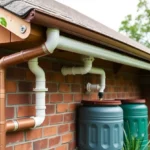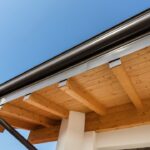For homeowners considering a new roof or roof repair, understanding how thick is roof sheathing is crucial. Roof sheathing plays a vital role in the structural integrity and functionality of a roof. This article will explore the appropriate thickness for this essential roofing component, helping you make informed decisions.

Roof Sheathing Basics
Roof sheathing, often made from plywood or OSB (Oriented Strand Board), provides a foundation for roofing materials and offers stability to the roof structure. It is placed directly onto the roof trusses or rafters.
Importance of Roof Sheathing Thickness
The thickness of your roof sheathing affects both the strength and durability of your roof. Properly chosen sheathing thickness helps distribute loads efficiently and withstands various weather conditions.
Factors Influencing Sheathing Thickness
- Climatic Conditions: In areas prone to heavy snowfall, thicker sheathing is often recommended.
- Roof Design: Different designs might demand varying thicknesses for adequate support.
Common Sheathing Thickness Options
Here’s a look at some common thickness options available for roof sheathing:
- 3/8 inch: Minimum thickness suitable for roofs with closely spaced rafters.
- 1/2 inch: Common for most residential applications due to balance in weight and strength.
- 5/8 inch: Offers extra strength, usually for areas experiencing more stress.
- 3/4 inch: Primarily used for commercial or industrial buildings.
The Role of Local Building Codes
When deciding on the thickness of roof sheathing, you must also consider local building codes. These regulations often specify minimum acceptable thickness to ensure safety and reliability.
Advantages of Optimal Sheathing Thickness
- Enhanced Durability: Thicker sheathing can prolong the life of your roof by providing enhanced structural support.
- Energy Efficiency: Proper insulation is easier to manage with well-built sheathing.
- Resale Value: Improved structural stability can add value to your property.
Challenges with Improper Thickness
Using sheathing that is too thin can lead to roof sagging, moisture infiltration, and overall decrease in roof lifespan. Conversely, overly thick sheathing might be unnecessarily costly and heavy.
Best Practices for Choosing Roof Sheathing Thickness
- Consult with a roofing professional to evaluate your house’s specific needs.
- Consider climate, building codes, and budget carefully when choosing thickness.

Conclusion: Making the Right Choice
By understanding how thick is roof sheathing and the various factors involved in its selection, you can ensure your roof’s durability and functionality, meeting both aesthetic and safety standards.
FAQs
Q1: What’s the typical cost of roof sheathing?
A: The cost varies by thickness and material but generally ranges from $5 to $15 per sheet.
Q2: How does roof design affect sheathing?
A: Complex designs might require thicker sheathing for extra support to accommodate multiple slopes and angles. [source: https://roof-home.com]
Q3: Can I replace just the sheathing without replacing the entire roof?
A: Yes, it’s possible, but ensure that the existing roof structure can support the new sheathing.
For more insights, you can visit [Forbes Home Improvement](https://www.forbes.com/home-improvement/roofing/roof-replacement-cost/) (rel=’nofollow’) and learn about roof replacement costs and considerations. Additionally, check out the article on [Roofing Material Guide](https://roof-home.com/top-5-roofing-materials-a-guide-to-choosing-the-best-option-for-your-home/) (rel=’dofollow’) for further guidance.
This article contains affiliate links. We may earn a commission at no extra cost to you.








